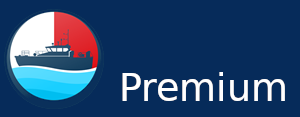"Improving Bridge Resource Management - Human Factors in Maritime Safety" is equally suitable for self-study and as a basis for BRM training. It is written with the nautical professional everyday life in mind and with the aim of
- raising awareness of the necessity and benefits of BRMs in general, as well as of the sector-specific risks of shipping and the requirements of BRM,
- offering action strategies and tools to avoid negative effects or to simplify and speed up procedures and decision-making processes,
- to provide concrete recommendations for managers, teams, individuals and trainers to promote this tool and integrate it into everyday life on board.
The maritime industry still lacks a standardisation of the exact contents and methods how crews should be trained especially in Bridge Resource Management (BRM) and human factors. Obviously, the international committees are building on the shipping companies' own responsibility and safety culture.
The practice-oriented book "Improving Bridge Resource Management" contributes to closing this gap: It deals with the causes of accidents in the "safety industry" of shipping, presents sources of error and potential risks and shows what bridge resource management training should include in order to minimise them preventively. Crucial aspects of human factors for bridge and engine personnel are discussed in a simple and clear manner. It is shown how communication leaks are closed and decisions are made faster and more confidently, how teams can be brought together emotionally, friction losses reduced and error potentials minimised. The benefits and the necessity of the proactive security management tool BRM will also become clear – for individuals, teams, organisations and the entire industry.
The authors are experts from human factors research, BRM trainers and practitioners from the maritime industry. In presenting organisational, systemic and psychological aspects, they deliberately concentrate on simple and easily understandable models and tools, and focus on their catchiness and practical handling. Their contributions aim not only to describe and illustrate the most important factors of safe action in seafaring, to discuss human action in this complex system and to point out potential errors, but also to offer simple and concrete solutions, to present practical tools for action and to make recommendations suitable for everyday use.
Bonus for free: The e-book-PDF of this book is available upon registration.


